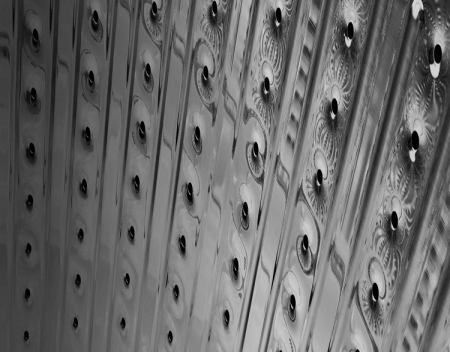Blog Categories
- Appliances Four
- Athletic Seating
- Auto Helpers
- Automated Stock Rooms
- Chocolate Four
- CuraFlo
- Damaged Goods Dating
- Flood Insurance Four
- Game Addict
- Hi Tech Pest Control
- HVAC Four
- Medical Labels Four
- Mental Health Four
- National CWS
- Promotional Ideas
- Seguros Lara Insurance
- Stem Cell Worx
- The Hidden Truth
- The Last Refuge
- The Mozilla Blog
- Video Editing Four
- Web Design Dev
- Website Development Four
- Windows Blog
Washer Leaks And Other Washer Water Issues

You just walked into a puddle of water in your laundry room. Or you go to move a load from the washer to the dryer, but realize the washer hasn’t even filled yet. Luckily, there are some easy fixes for these problems. Let’s dive into a few of the most common washer water problems and what to do about them.
LEAKY WASHER?
If you have a front-load washer and the leak is coming from the door, the issue is likely a result of a problem with the door seal.
Check the seal for:
- Dirt and deposits.
- Small objects lodged within.
- Rips and tears.
Wipe your seal down with a damp cloth to ensure it’s clean and free of obstructions.
If water is escaping from your top-load washer, your leak may be coming from one of the hoses.
Some things to check your cold and hot water inlet hoses for:
- Is there a rubber washer installed on each end? These little pieces play a big part in preventing leaks.
- Has it been more than five years since your hoses have been replaced? It’s time to get new ones.
- Are they installed properly?
WASHER NOT FILLING?
First, check to ensure faucets or valves for each hose are on and open. Also ensure hoses are free of water-restricting kinks and clogs.
Additional reasons for a washer not filling:
- Anti-flood devices. These reduce the pressure and amount of water entering the washer.
- The water sensor feature. This can cause the washer to take from 1 ½ to 5 minutes to fill at the beginning of each cycle.
DRAINAGE ISSUES?
First check to make sure your drain hoses are installed correctly. See how here.
If water is not draining at all or continuously filling and draining, here are a few things that may be happening:
- Is the drain hose extending more than 4.5 inches into the drainpipe? This will cause drained water to siphon back into the washer.
- Is the drain hose taped onto the drainpipe? The drain hose should be secure, but loose. There must be a gap between the hose and pipe to allow air to flow through.
- Is the drainpipe less than the minimum height of 30 inches? When below this height, water will start to flow out the machine and can create a siphon, continuously draining the water out of the washer.
- Are you using high-efficiency detergent? Excess suds from other detergents can cause reduced spin speed, which can result in very wet loads.
- The problem could also be that one, or both, of the water valves is open. If the washer does not detect water entering for 13 minutes, it will go into a drain routine. In this mode, the washer will sound like it's draining for about 8 to 10 minutes, and the pump will run continuously. The control won’t accept any input during this time, so wait 10 minutes before trying anything. Then check the household water supply to see if the hot and cold water faucets are turned on, and make sure their valves are open.
LOW WATER LEVEL?
Different settings have different water levels, and some may seem low. If you prefer a higher water level, see if your washer has a fuller fill setting.
To get the most out of a low water wash:
- Don’t add extra water to the cycle. This can cause the clothes to float, which lessens cleaning action.
- Do use HE High-Efficiency detergent. These low-sudsing detergents are specifically designed to optimize cleaning with lower water levels.
Reposted From: Amana.com
Re Posted From: Washer Leaks And Other Washer Water Issues

You just walked into a puddle of water in your laundry room. Or you go to move a load from the washer to the dryer, but realize the washer hasn’t even filled yet. Luckily, there are some easy fixes for these problems. Let’s dive into a few of the most common washer water problems and what to do about them.
LEAKY WASHER?
If you have a front-load washer and the leak is coming from the door, the issue is likely a result of a problem with the door seal.
Check the seal for:
- Dirt and deposits.
- Small objects lodged within.
- Rips and tears.
Wipe your seal down with a damp cloth to ensure it’s clean and free of obstructions.
If water is escaping from your top-load washer, your leak may be coming from one of the hoses.
Some things to check your cold and hot water inlet hoses for:
- Is there a rubber washer installed on each end? These little pieces play a big part in preventing leaks.
- Has it been more than five years since your hoses have been replaced? It’s time to get new ones.
- Are they installed properly?
WASHER NOT FILLING?
First, check to ensure faucets or valves for each hose are on and open. Also ensure hoses are free of water-restricting kinks and clogs.
Additional reasons for a washer not filling:
- Anti-flood devices. These reduce the pressure and amount of water entering the washer.
- The water sensor feature. This can cause the washer to take from 1 ½ to 5 minutes to fill at the beginning of each cycle.
DRAINAGE ISSUES?
First check to make sure your drain hoses are installed correctly. See how here.
If water is not draining at all or continuously filling and draining, here are a few things that may be happening:
- Is the drain hose extending more than 4.5 inches into the drainpipe? This will cause drained water to siphon back into the washer.
- Is the drain hose taped onto the drainpipe? The drain hose should be secure, but loose. There must be a gap between the hose and pipe to allow air to flow through.
- Is the drainpipe less than the minimum height of 30 inches? When below this height, water will start to flow out the machine and can create a siphon, continuously draining the water out of the washer.
- Are you using high-efficiency detergent? Excess suds from other detergents can cause reduced spin speed, which can result in very wet loads.
- The problem could also be that one, or both, of the water valves is open. If the washer does not detect water entering for 13 minutes, it will go into a drain routine. In this mode, the washer will sound like it's draining for about 8 to 10 minutes, and the pump will run continuously. The control won’t accept any input during this time, so wait 10 minutes before trying anything. Then check the household water supply to see if the hot and cold water faucets are turned on, and make sure their valves are open.
LOW WATER LEVEL?
Different settings have different water levels, and some may seem low. If you prefer a higher water level, see if your washer has a fuller fill setting.
To get the most out of a low water wash:
- Don’t add extra water to the cycle. This can cause the clothes to float, which lessens cleaning action.
- Do use HE High-Efficiency detergent. These low-sudsing detergents are specifically designed to optimize cleaning with lower water levels.
Reposted From: Amana.com
Re Posted From: Washer Leaks And Other Washer Water Issues

